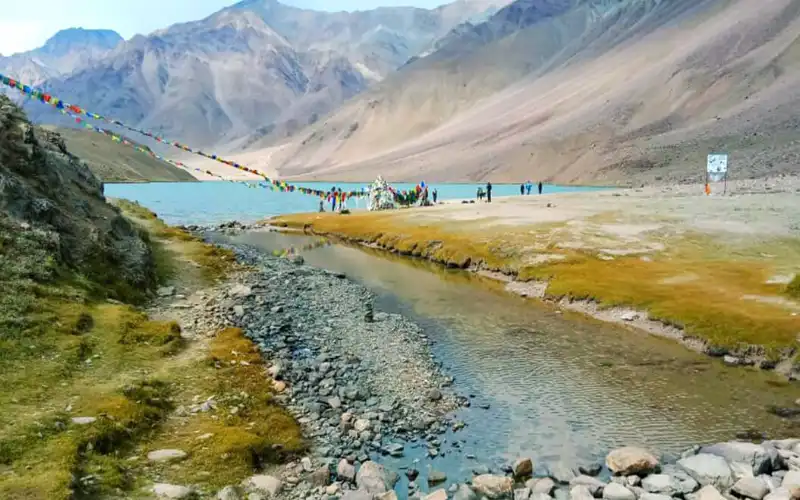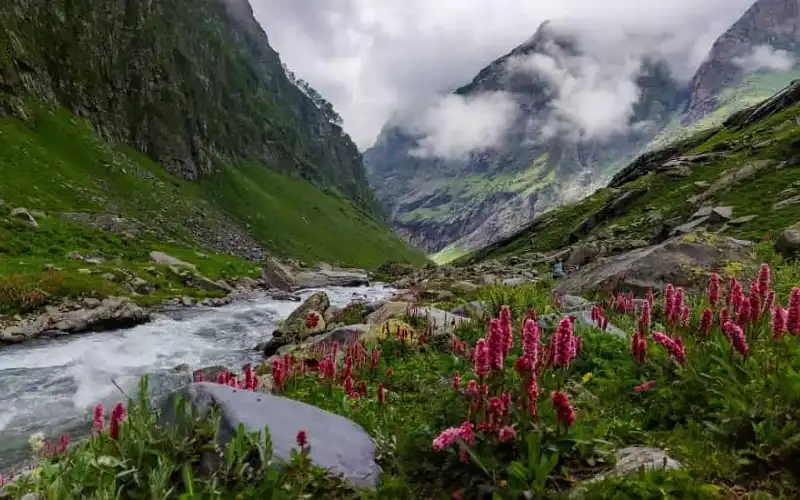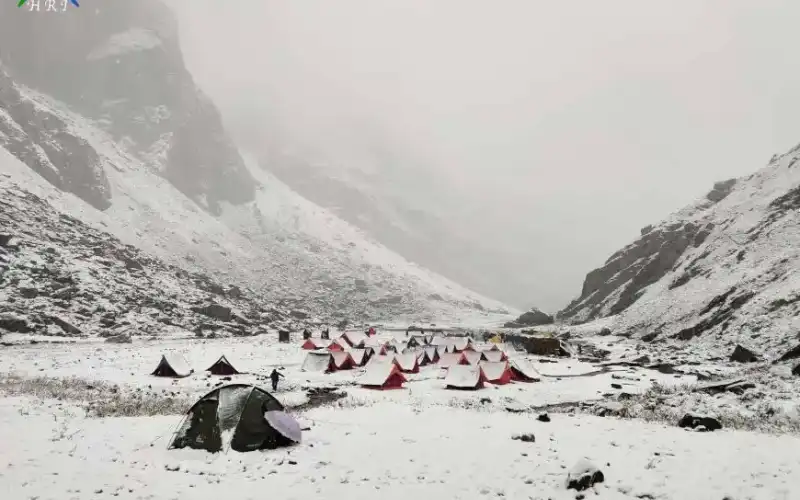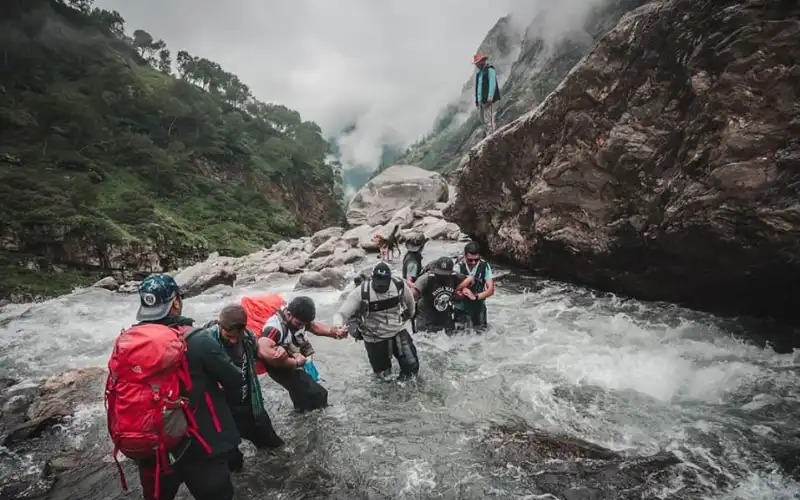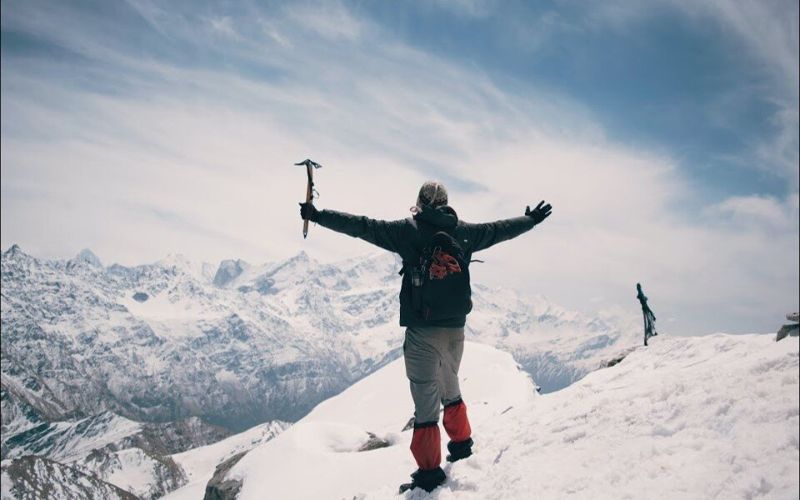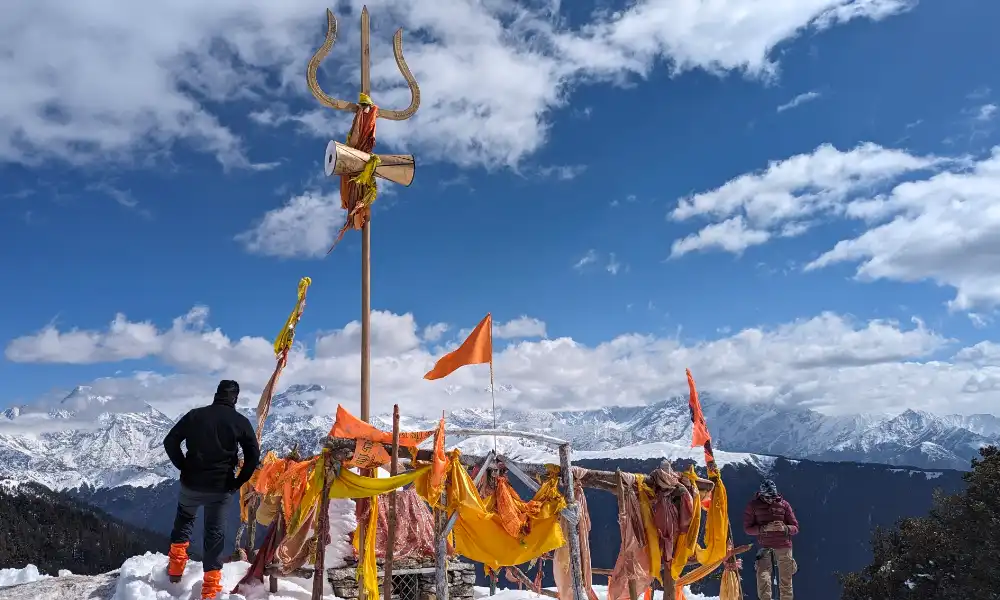Who can participate
- Age; 7 years.
- First timer can apply; previous trekking experience is more appreciated.
- The trekker must be fit and have sufficient stamina to cover 4 km of distance in 35 minutes without a stress.
- Maximum age depends on your fitness level
- The climber should be able to carry a 10-12 kg backpack.
Health Awareness
- Pulse rate at rest must be in between (60 to 90 beats per minute)
- Blood Pressure Reading must be in between (DIASTOLIC 75 – 85, SYSTOLIC 100 - 130 mm Hg)
- Respiratory rate at rest must be in between (12 to 20 breaths per minute)
- Should not have Liver and kidney issues
- Should not have Diabetes Mellitus, Bronchial Asthma, Epilepsy, Heart problems, Hypertension etc
- No pacemaker implant
- People with the Sinus issues please contact to trek coordinator before booking the trek
- If your BMI is not normal, Please contact our Trek coordinator before Trek booking.
Note:
- Junior trekkers (below 15 years) should have a company of parent/guardian.
- Trekkers between 15 to 18 years can come solo with the disclaimer form signed by parent/guardian.
- Medical & Disclaimer Form (Mandatory Documents ; Click here
Trek Essential
- Clothing:
- Moisture-wicking base layers (tops and bottoms)
- Insulating mid-layers (fleece or down jacket)
- Waterproof and windproof outer shell (jacket and pants)
- Extra pairs of socks
- Warm hat and gloves
- Footwear:
- Sturdy and waterproof hiking boots with good ankle support and traction
- Camp shoes or sandals for rest stops
- Backpack:
- Comfortable and sturdy backpack with hip belt and chest strap
- Water and Hydration:
- Sufficient water bottles or hydration reservoir
- Water purification tablets or filtration system
- Food and Snacks:
- Lightweight and high-energy snacks such as trail mix, energy bars, and dried fruits
- Instant meals for camping (if not provided by trek organizers)
- Navigation and Safety:
- Map of the trekking route
- Compass or GPS device
- Headlamp or flashlight with extra batteries
- Whistle
- Multi-tool or knife
- Emergency blanket or bivy sack
- First-Aid Kit:
- Adhesive bandages
- Antiseptic wipes
- Pain relievers (ibuprofen or acetaminophen)
- Blister treatment (moleskin or blister pads)
- Antihistamines (for allergic reactions)
- Personal medications
- Sun Protection:
- Sunscreen (SPF 30+)
- Lip balm with SPF
- Sunglasses with UV protection
- Wide-brimmed hat or cap
- Personal Hygiene:
- Toilet paper
- Hand sanitizer
- Trowel for digging cat holes
- Biodegradable soap (for washing hands and utensils)
- Camp Gear:
- Lightweight tent or shelter
- Sleeping bag suitable for cold temperatures
- Sleeping pad or mattress
- Cooking stove and fuel
- Cooking utensils and mess kit
- Lightweight and packable camping chair (optional)
- Other Essentials:
- Identification (ID card or passport)
- Permits and necessary documents
- Cash and/or credit/debit cards
- Mobile phone or satellite communication device
- Camera or smartphone for capturing memories
- Trash bags for packing out waste
- Optional Extras:
- Trekking poles for added stability
- Binoculars for wildlife viewing
- Book or journal for relaxation and reflection
- Snacks or treats for morale-boosting during long hikes
Cost Term
Normally Go Adven India expect to carry your personal luggage on your own, if you wish to offload your backpack, you can give it to Mule.
Charges of offloading backpack:-
INR 2000/- Bag
The backpack cannot weight more than 11 kgs. Backpack should have waterproof cover. Suitcases/strolleys/ bags will not be allowed.
How to Reach:
Pick-Up Information: 6 AM
Arrival Time in Rishikesh: Ensure you arrive by 5:30 AM.
Pick-Up Location:
Tapovan, Rishikesh
Landmark: State bank of india, opposite Balak nath Mandir Tapovan, Rishikesh
How to reach Rishikesh:
Flight Options:
Fly Directly to Dehradun
Recommended for an added rest day in Rishikesh.
Frequent connections from major metro cities.
1-hour bus ride from Dehradun to Rishikesh or can hire a cab directly from airpot to your stay in tapovan, Rishikesh.
Fly to Delhi:
Arrive before 9:00 PM
Take a bus to Rishikesh from Delhi.
Train Options:
Dehradun Shatabdi (Train no: 12017)
Departs New Delhi Railway Station at 6:45 AM, arrives in Haridwar at 11:30 AM.
Frequent buses from Haridwar to Rishikesh (1-hour journey).
Dehradun Jan Shatabdi (Train no: 12055):
Leaves Hazrat Nizamuddin at 3:20 PM, arrives in Haridwar at 7:33 PM.
Stay overnight in Tapovan, Rishikesh.
Overnight Bus Option:
Overnight Volvo AC Bus
Depart from Delhi’s ISBT Kashmiri Gate.
Frequent departures, taking about 8-9 hours.
Aim for a bus that arrives before 5:30 AM.
Additional Notes:
Last metro from the airport to New Delhi is at 11:15 PM.
Drop-Off Information:
Drop-Off Point:
Tapovan, Rishikesh
Arrival Time: Aim to reach Rishikesh between 6:30 PM and 7:30 PM.
Subsequent Travel Arrangements:
Plan any further travel after 10:00 PM to ensure you have enough time for your arrival and any necessary transitions or stay Rishikesh overnight.
Planning Your Return Flight/Train Booking
When planning your return, keep the following in mind:
- Trek Ends on Day 6:
- Do not book your return tickets for Day 6.
- Book for Day 7 instead.
- Return from Dehradun:
- Consider Day 7 as your booking date.
- Return from Delhi:
- If flying from Delhi, opt for an evening flight on Day 7 or a morning flight on Day 8.
- Early Morning Flights on Day 9:
- You can book early morning flights, but ensure they depart after 8:00 AM.
- Avoid flights between 6:00 AM and 8:00 AM to ensure you have enough time to reach Delhi.
ATM Points and Mobile Connectivity on the Brahmatal Trek
ATM Points:
- Dewal: The last reliable ATM is located in Dewal, a small town you'll pass through on your way to Ghase, the base camp for the trek.
- Pre-Trek Withdrawal: It’s highly advisable to withdraw sufficient cash from Rishikesh, Karnaprayag, or Dehradun before heading to the base camp.
- Tip: Carry enough cash for the entire trek, covering transportation, food, and emergency expenses, as ATMs are scarce once the trek begins.
Mobile Connectivity: Not Available during trek
-
- Emergency Communication: It’s advisable to inform your family of your plans before starting the trek. You may find weak signals from Jio and Airtel at certain high points, but reliability is not guaranteed.
Emergency Preparedness:
- Guides and Leaders: Trek leaders and local guides are usually well-prepared for handling emergencies in areas without mobile connectivity.
Summary:
- ATM: Last reliable ATM in Dewal; withdraw cash beforehand.
- Mobile Connectivity: NO Network in Ghash village
Safety Measures at GoAdven Indiak (GAI)
GoAdven India (GAI) is celebrated as one of the best trekking companies in India, renowned for its expertly curated treks and unwavering commitment to safety. The thrill of trekking in the Himalayas comes with inherent risks, making it essential for both beginners and experienced trekkers to prioritize safety. Here’s an overview of the comprehensive safety measures GAI implements before and during treks, ensuring every trekker can embark on their adventure with confidence.
Pre-Trek Safety Measures
a. Pre-Trek Briefings
At GAI, we believe that a well-informed trekker is a safer trekker, making pre-trek briefings a cornerstone of our safety strategy.
- Importance of Thorough Briefings: These sessions ensure that participants are prepared and aware of what to expect, aligning everyone on the trek itinerary, safety protocols, and overall expectations.
- Topics Covered:
- Itinerary Overview: Detailed insights into daily routes, camping sites, and significant landmarks to help trekkers mentally prepare for challenges.
- Safety Protocols: Emphasis on altitude sickness awareness, emergency procedures, and correct use of safety equipment, including recognizing AMS symptoms.
- Expectations and Guidelines: Discussion of the code of conduct, environmental preservation, and adherence to the trek leader's instructions.
b. Medical Safety
The health and well-being of trekkers is a top priority at GAI.
- First Aid Kits and Medical Supplies: Every team carries well-stocked first aid kits to manage injuries and common ailments, including medications for altitude sickness.
- Protocols for Acute Mountain Sickness (AMS):
- Education and Prevention: Trekkers learn about AMS symptoms and preventive measures during briefings.
- Monitoring: Leaders and medical personnel closely monitor trekkers for AMS signs.
- Treatment and Response: Immediate actions are taken if AMS symptoms are detected, including rehydration and potential evacuation.
c. Technical Safety
GAI prioritizes technical safety for navigating the challenging terrains of the Himalayas.
- Use of Appropriate Gear: Trekkers are equipped with essential gear such as trekking poles, sturdy boots, harnesses, ropes, helmets, and crampons.
- Regular Maintenance of Equipment: All gear is regularly inspected and maintained to ensure optimal safety and functionality.
- Training on Technical Gear: GAI provides training on the proper use of equipment, covering techniques for balance, safety procedures, and gear handling.
Emergency Protocols
GAI understands the need for comprehensive emergency protocols in remote environments.
a. Emergency Response Plan
- Immediate Response: Trained guides are equipped to provide first aid and stabilize patients during emergencies.
- Coordination with Local Authorities: Established protocols for communicating with local medical facilities and rescue teams ensure prompt assistance.
b. Evacuation Procedures
Efficient evacuation procedures are critical for the safety of trekkers.
- Use of Ground Transport: GAI arranges ground transport for less critical cases.
- Quickest Route to Medical Facilities: Pre-arranged agreements with local transport providers ensure rapid response times to medical facilities.
Commitment to Safety
At GoAdven India, we uphold the highest safety standards in the trekking industry. Our commitment extends beyond local regulations, striving to exceed them to ensure each trek is not only adventurous but also safe and enjoyable. With our meticulous preparations and robust safety protocols, trekkers can embark on their journeys with confidence and peace of mind.


